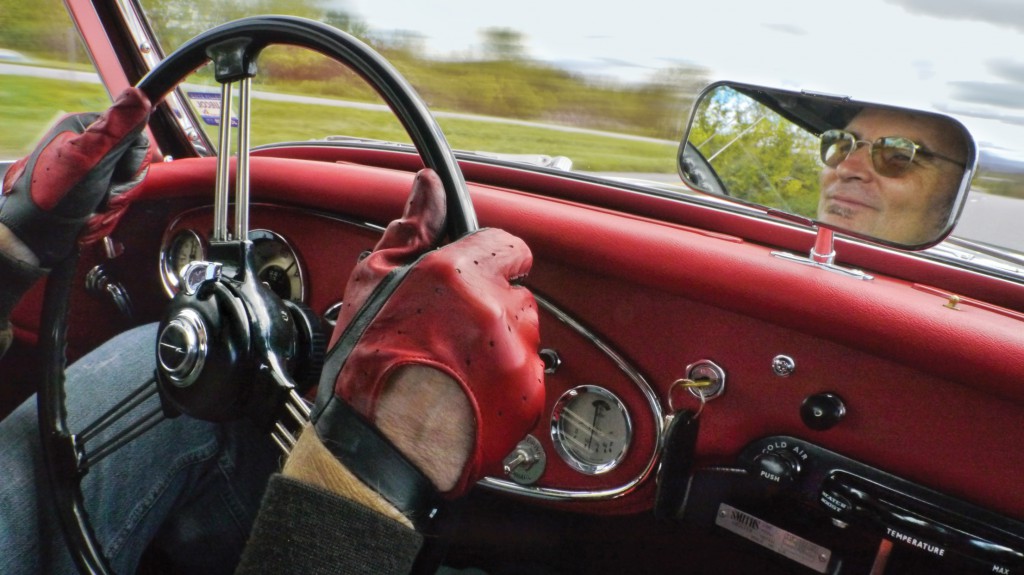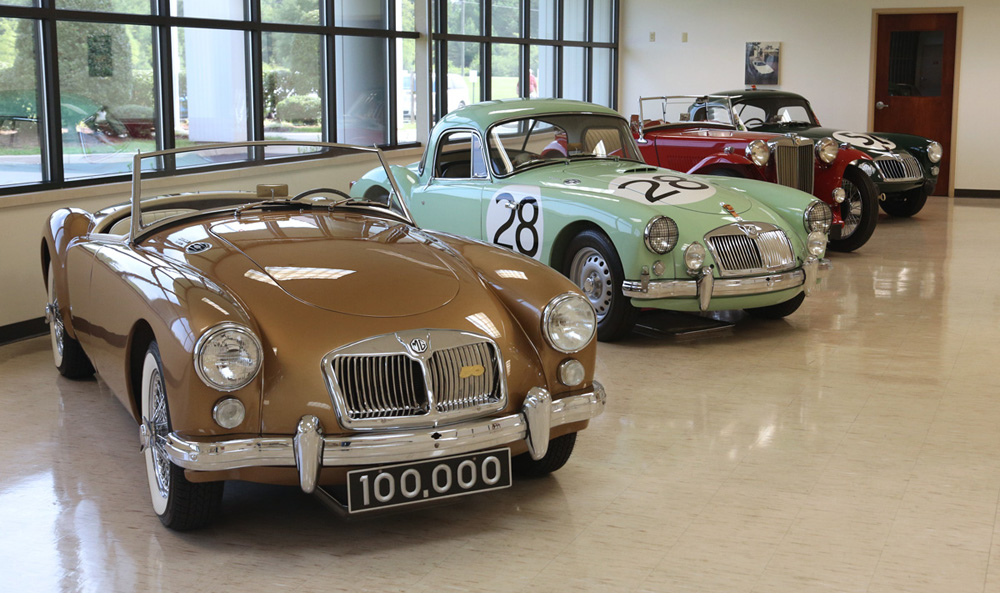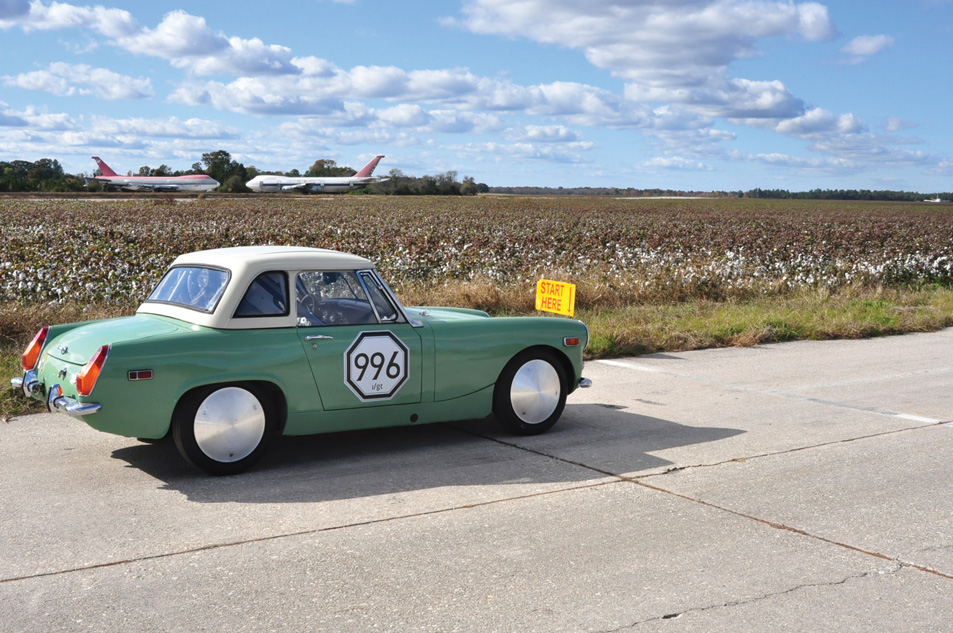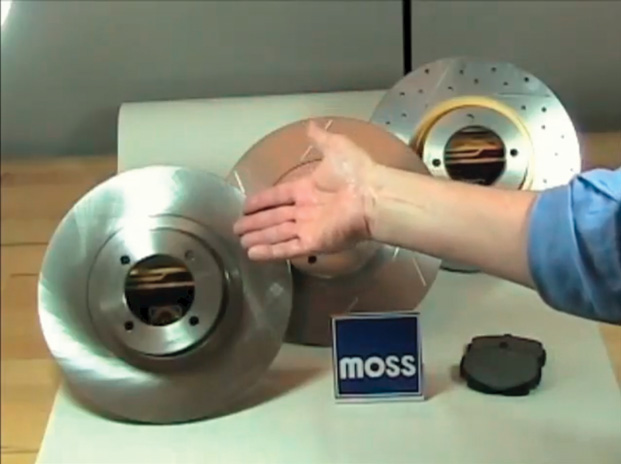A Restoration Journey Goes the Extra Mile
As a kid, there were few things I found more enjoyable than to dismantle appliances around the house when nobody was looking. I started with radios and my 10-speed bike, then the lawnmower and the snowmobile carburetor. For the most part I could put it all back together and it would work, but sometimes I had to find help. Fortunately for me, my father’s car never was considered—too intimidating. But I loved cars above everything else.
 One of the cars I dreamed about was the Austin-Healey. It was exotic; in the early 60s you rarely saw one on the street. It had character. It was a car without lineage; though it was adopted by Austin, it owed nothing to the staid old family of cars it shared quarters with. It belonged with the more romantic group of Jaguars, Corvettes and Ferraris. Noisy, flashy sports cars. Rebel teenagers in the automobile world.
One of the cars I dreamed about was the Austin-Healey. It was exotic; in the early 60s you rarely saw one on the street. It had character. It was a car without lineage; though it was adopted by Austin, it owed nothing to the staid old family of cars it shared quarters with. It belonged with the more romantic group of Jaguars, Corvettes and Ferraris. Noisy, flashy sports cars. Rebel teenagers in the automobile world.
The car dreams were put on hold, and it took a while before they resurfaced. In my late 20s I wandered into a New York bookstore and started flipping through Chris Harvey’s, The Handsome Brute. I left the store with that book, a repair manual and a copy of Hemmings. For years afterwards, I re-read those books and checked on the prices: $6000 for a good used Healey. Too much! I’ll wait till I get a house with a garage, I told myself…
Along came the house and garage, and for a few years the bug came back as full blown racing pneumonia. Cars and karts occupied the garage for a few years, until I realized I liked to tinker just as much as drive. So I sold the racing kart and bought yet another copy of Hemmings. This time I was ready, and I found a forlorn BN7 in Texas and bought it. My objective was to rebuild it on a new frame with as many NOS parts I could find and end up with the closest thing to a new Austin-Healey out of the showroom.
 It took a lot of doing. First, I enlisted Van Hooten, a great body man. Van had been taught right and he knew how to shape, weld and hammer panels. No English wheel, just a hammer and dolly. He’s what you would call an old school metalworker with experience in collision repair. Plenty of people around collision center or body shops have learned to repair collision damage with modern methods. You replace the panel, or push filler in the dents and paint it the same day. Collision repair or car restoration means that sometimes you have to make your own panels, and sometimes you have to do intricate welding, which requires a gentle touch. Even with Van’s experience, we found the going tough. We literally made up all the substructure parts from paper templates using the old car as a guide. For example, we draped a large piece of paper over a rust-riddled inner wing, folded the paper over the curves, and then cut triangular reliefs out. This is not an exact science, but as you can see from the photos (found on page 21), the result, when welded and hammered, looks just like a stamped factory panel.
It took a lot of doing. First, I enlisted Van Hooten, a great body man. Van had been taught right and he knew how to shape, weld and hammer panels. No English wheel, just a hammer and dolly. He’s what you would call an old school metalworker with experience in collision repair. Plenty of people around collision center or body shops have learned to repair collision damage with modern methods. You replace the panel, or push filler in the dents and paint it the same day. Collision repair or car restoration means that sometimes you have to make your own panels, and sometimes you have to do intricate welding, which requires a gentle touch. Even with Van’s experience, we found the going tough. We literally made up all the substructure parts from paper templates using the old car as a guide. For example, we draped a large piece of paper over a rust-riddled inner wing, folded the paper over the curves, and then cut triangular reliefs out. This is not an exact science, but as you can see from the photos (found on page 21), the result, when welded and hammered, looks just like a stamped factory panel.
 We put all the substructure panels together using metal screws so we could align the outer body panels correctly. What you should know about Healeys and a few other British cars is that there are huge variations (up to 3/4 of an inch) in fit, and the body panels cannot be adjusted. Same goes for the suspension. Therefore the drivetrain, suspension and body had to be assembled on the structure to check for proper alignment and clearances. We were forced to do so, because the factory measurements are incomplete, the body panels had been sourced from different cars and again, no two Healeys are the same.The fact that you can move the scuttle support helps, of course, if you need to fit the shroud or the windscreen, but all of the panels are connected by compound curves, so that stage was delicate.
We put all the substructure panels together using metal screws so we could align the outer body panels correctly. What you should know about Healeys and a few other British cars is that there are huge variations (up to 3/4 of an inch) in fit, and the body panels cannot be adjusted. Same goes for the suspension. Therefore the drivetrain, suspension and body had to be assembled on the structure to check for proper alignment and clearances. We were forced to do so, because the factory measurements are incomplete, the body panels had been sourced from different cars and again, no two Healeys are the same.The fact that you can move the scuttle support helps, of course, if you need to fit the shroud or the windscreen, but all of the panels are connected by compound curves, so that stage was delicate.
When you think of a Healey, remember: the tub is the car. There are no oval holes to adjust anything. Of course there are dodges, like cutting away a slice in a panel or loading up the filler, but this car was built to avoid cheating as much as possible. In fact, I never had a timeline or a budget for the project. Call me what you want, but I did get a nice car out of it. The research I had done as an armchair restorer really paid off. I remember a seasoned mechanic friend of mine watch me struggle with the hoist to get the engine out, saying I needed to separate the transmission from the engine. I answered that I had read it could be done all in one go and proceeded to show him how, parking the drivetrain neatly on a dolly I had made from a photo in The Handsome Brute.
 One thing to remember when you restore a car is: tons of parts everywhere. The risk of drowning in or tripping over them is very real. Peter Eagan once said that after years of experience he realized the best place to store car parts is to put them on the car! Throughout the many years it took to rebuild the car, I busied myself in searching out the best quality parts and to get a feel for the appearance of each one—as it would have been when new. Fortunately, a man who stocks a large quantity of original parts is near my house and he let me snoop around the shelves, provided I would spend money once in a while. It’s interesting to see how sloppy, dull or unimpressive an original part can be compared to what you think you would want. Getting the feel of the original paint finish with modern paints is also a challenge. So it helps to look at the real thing. Experts like Roger Moment also contributed to get the authenticity details right. I would also add that his collaboration with Moss Motors on part specifications is very helpful, and in the case of the leaf springs I put on the car, the result is a perfectly sprung rear end. From the spring rate to the clips with slotted screws, the springs look and perform like the car was brand new.
One thing to remember when you restore a car is: tons of parts everywhere. The risk of drowning in or tripping over them is very real. Peter Eagan once said that after years of experience he realized the best place to store car parts is to put them on the car! Throughout the many years it took to rebuild the car, I busied myself in searching out the best quality parts and to get a feel for the appearance of each one—as it would have been when new. Fortunately, a man who stocks a large quantity of original parts is near my house and he let me snoop around the shelves, provided I would spend money once in a while. It’s interesting to see how sloppy, dull or unimpressive an original part can be compared to what you think you would want. Getting the feel of the original paint finish with modern paints is also a challenge. So it helps to look at the real thing. Experts like Roger Moment also contributed to get the authenticity details right. I would also add that his collaboration with Moss Motors on part specifications is very helpful, and in the case of the leaf springs I put on the car, the result is a perfectly sprung rear end. From the spring rate to the clips with slotted screws, the springs look and perform like the car was brand new.
Driving a newly restored car after ten years of restoring it requires a mindset adjustment. Probably not unlike when you move in with your sweetheart and realize she has become your roommate. The first drive was intimidating enough. Who knows if the wheels won’t fall off, the carbs spill fuel over the manifolds and the whole thing goes up in flames? Not that British cars are known for that. It felt like I was driving somebody else’s car for quite a while.
Once the last bugs were ironed out and I finally entered my car in its first ever concours—British Invasion in Stowe, Vermont—it was time to face the music. Never mind what I thought of the car, the details I still wanted to fix and the things I wanted to do better. The time came to head out to the field Saturday morning with just enough time to detail the wheels, the interior, a final polish and just a little toothbrushing here, a Q-tip there…I was still on all fours when I spotted two pairs of shoes in front of me. Time’s up! Rags down! When I think back, this is the exact moment when my ten-year restoration ended. Up until then I could always re-plate or polish little bits here and there. Now I threw in the towel and hoped they would like the car. I stood up and looked around the concours field. A ’29 Rolls Royce tourer, complete with chauffeur, looked haughtily back at me. Okay, there is the best of show car, I thought to myself. Next would be that nice Jaguar over there with the white sidewalls. Owning a Healey, you get know your place in the car world. You go to Pebble Beach, park in the event parking and take the shuttle to the field. So I was cautiously hoping for a class win.
 Then someone said the head judge wanted to see me. No problem, I had read the rules; when there is a tie in the class, the cars have to be re-examined. I was prepared to put the bonnet up again, but instead, out comes the judge’s hand to congratulate me. I had my class win! I was thrilled and I told him so. He smiled patiently and said something like: yes, yes but that’s not all—he said: Best of Concours.
Then someone said the head judge wanted to see me. No problem, I had read the rules; when there is a tie in the class, the cars have to be re-examined. I was prepared to put the bonnet up again, but instead, out comes the judge’s hand to congratulate me. I had my class win! I was thrilled and I told him so. He smiled patiently and said something like: yes, yes but that’s not all—he said: Best of Concours.
After that things were a blur. Guys shaking my hand I never met, pats on the back all ’round. Photos. A nice big cup. Lots of beers at the pub. Most of the Healey club guys I met ten years earlier were there with me, and any joking remarks about my never ending restoration were replaced with… admiration? Not these guys. But they’ll find something or someone else to pick on now! I can say that they made the restoration journey more interesting for me, and at the very least—friends to commiserate with. It was great to have them around that day.
So now the question is: what is the next project going to be? I don’t know for sure. There are long winter months ahead and I keep tripping on these Lotus Seven parts in my basement…maybe I should find a place to put them?
By Alain Giguère
Photography By Marianna Armata











'Healey Dream' has 1 comment
May 18, 2012 @ 10:21 am david
Simply amazing….